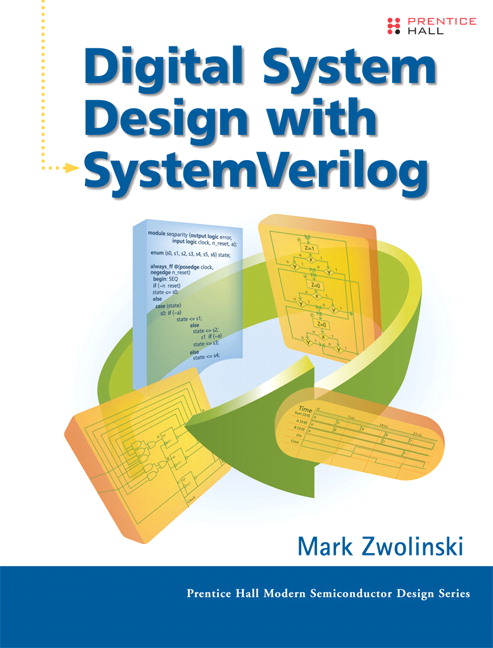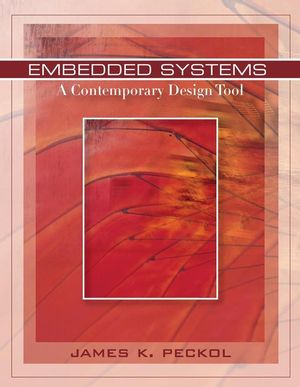
Embedded System Design
Spring 2022
 |
||
| CSEE 4840 Embedded System Design Spring 2022 |
||
Class meets Fridays, 1:10 - 3:40 PM in 451 CSB.
Mudd 1235 is the lab, which is filled with Linux workstations. Registered students will receive accounts on these machines and 24-hour badge access to this room.
Do the labs in pairs. Project groups should be three students or more.
| Name | Office hours | Location | |
|---|---|---|---|
| Prof. Stephen A. Edwards | sedwards@cs.columbia.edu | By appt. | Online |
| Martha Barker | mbarker@cs.columbia.edu | See Canvas Announcements | |
| Abhijeet Nayak | an3075@columbia.edu | See Canvas Announcements |
Prerequisites: ELEN E3910 or COMS W3843 or the equivalent. Embedded system architecture and programming. I/O, analog and digital interfacing, and peripherals. Weekly laboratory sessions and term project on design of a microprocessor-based embedded system including at least one custom peripheral. Knowledge of C programming and digital logic required. Lab required.
The goal of this class is to introduce you to issues in hardware/software interfacing, practical microprocessor-based system design issues such as bus protocols and device drivers, and practical digital hardware design using modern logic synthesis tools. You will put all of this to use in the lab where you will be given the opportunity to implement, using a combination of C and the SystemVerilog hardware description langauge, a small embedded system.
This is a lab course done in two parts. During the first part of the class, each student will implement the same "canned" designs designed by the instructor and be given substantial guidance. These are meant as an opportunity for you to learn the development tools and basic concepts. In the second part of the class, you will divide up into teams and each will design and implement a comparable project of their own with guidance from the instructor and TAs.
This course is a capstone in which students will integrate their knowledge of digital logic, programming, and system design to produce a real system. It is intended to complement ELEN 4340, Computer Hardware Design. 4840 focuses more on system-design issues and include a large section on hardware/software integration. Students in 4840 will use gates, processors, peripherals, software, and operating systems as building blocks.
CSEE 3827, Fundamentals of Computer Systems or the equivalent. You must understand digital logic design. Prior experience with hardware description languages, FPGAs, or embedded processors is not required.
COMS 3157, Advanced Programming or the l equivalent. Specifically, C programming experience. While 4840 will teach you advanced aspects of embedded C programming, you need to come in with significant C experience.
COMS W4823, Advanced Digital Logic Design. While not a formal prerequisite, you are strongly encouraged to take it. In it, you will learn advanced logic design and HDL coding, both of which are crucial to success in 4840.
| Date | Lecture | Notes | Due |
|---|---|---|---|
| Fri Jan 21 | Introduction: Embedded Systems |
 |
|
| Fri Jan 28 | SystemVerilog |
 |
|
| Fri Feb 4 | Memory |
 |
|
| Fri Feb 11 | Networking, USB, and Threads Video |
  |
|
| Thu Feb 17 | (none) |
Lab 1
 Files |
|
| Fri Feb 18 | Hardware/Software Interfaces |
 |
|
| Fri Feb 25 | The Avalon Bus |
 |
Proposal |
| Thu Mar 3 | (none) |
Lab 2
 Files 16 GB SD Card Image |
|
| Fri Mar 4 | Device Drivers |
 |
|
| Fri Mar 11 | Qsys and IP Core Integration Debugging |
  |
|
| Mar 14-18 | Spring Break | ||
| Thu Mar 24 | (none) |
Lab 3
 |
|
| Fri Mar 25 | Sprite Graphics Line drawing example Processors, FPGAs, and ASICs (1/2) Processors, FPGAs, and ASICs (2/2) Audio Waveforms |
     |
|
| Thu Mar 31 | (none) |
Design document | |
| Fri Apr 1 | |||
| Fri Apr 8 | Design reviews |
||
| Fri Apr 15 | |||
| Fri Apr 22 | |||
| Fri Apr 29 | |||
| May 12 | Final Project Presentations |
You'll perform a design-it-yourself project in the second half of the class. There are five deliverables for the project:
Project teams should be three students or more.
This document should explain what you're going to build and how you're going to build it, but does not not need to include code. A corrected version of this document that reflects what you actually built should end up in your final project report.
Include the following things:
This is a critical part of the project and will be a substantial fraction of the grade.
Include the following sections:
Include all of this in a single .pdf file (don't print it out).
Also create a .tar.gz file (see the online documentation for the `tar' program to see how to create such a file. Briefly, create a file called `myfile' with the names of all the files you want to include in the archive and run tar zcf project.tar.gz `cat myfiles` to create the archive.) that just includes the files necessary to build your project, such as I did for the labs.
|
ANN_encryption_byLLE:
Integer Vector Homomorphic Encryption Accelerator (SE) Enze Chen, Lanxiang Hu, and Liqin Zhang |
|
Asteroids:
Asteroids Game (SE) Ben Philip Osuri |
|
AudioSampler:
Audio recording and playback with MIDI in (AN) Spandan Das and Avik Dhupar |
|
Breakout:
Video Game Clone (MB) Wang Chen, Youfeng Chen, Zheyuan Song, and Angzi Xu |
|
CHIP-8:
(AN) Xin Gao, Daniel Indictor, Elysia Witham, and Yuhang Zhu |
|
CNN:
Convolutional Neural Network Accelerator (SE) Yanchen Liu and Minghui Zhao |
|
CameraControl:
(AN) Fatima Dantsoho and Michael Lanzano |
|
DC-Motor-Controller:
(AN) Alexandre Msellati and Ayman Talkani |
|
Dunk-Hunt-22:
(MB) Bryce Natter, Kristen Shaker, and Alexander Yao |
|
FacialRecognition:
(SE) Liam Bishop, Daniel Cooke, Felix Hanau, Ryan Kennedy, and Richard Mouradian |
|
Invisibility-Curtain:
Chromakey for fun and profit (SE) Abhijeet Nayak and Srivatsan Raveendran |
|
Lightspeed:
Raycasting (AN) Adam Carpentieri and Souryadeep Sen |
|
MazeGame:
Pac-Man? (MB) Jerry Lin and Feitong Qiao |
|
Multi-Effects-Pedal:
Musical Effects real-time audio processor (AN) Ziqian Deng, Longyi Li, Yifan Zhan, and Yuqi Zhu |
|
New-Rally-Y:
Rally-X Game (SE) Andrew Juang |
|
RISCY:
RISC-V Core (SE) Shuai Zhang |
|
RiverRaid:
River Raid Clone (MB) Rojan Banmali and Xinhao Su |
|
Tetris:
Tetris Clone (MB) Shengyue Guo, Shibo Sheng, and Zihao Wang |
|
Touhou:
2D Bullet Dodging Game (MB) Xinye Jiang and Po-Cheng Liu |
|
ViewTube:
NYC Subway Data Visualizer (AN) Benjamin Allison, Jared Gonzales, and Lynsey Haynes |
|
Water-Raid-Project:
River Raid (MB) Yongmao Luo, Tristan Saidi, Jakob Stiens, and Zhaomeng Wang |
|
YOLO-CNN:
YOLO CNN based on weight quantization (SE) Haoran Jing, Botong Xiao, and Terry Zhang |
![]() My favorites
My favorites
Mark Zwolinski. |
 |
James K. Peckol. |
 |
| Grading | 30% Labs |
| 10% Milestone 1 | |
| 15% Milestone 2 | |
| 20% Milestone 3 | |
| 25% Final Report and presentation | |
| Late Policy | Zero credit for anything handed in after it is due without explicit approval of the instructor. |
| Collaboration Policy | Work in pairs on the labs. You may consult others, but do not copy files or data. You may collaborate with anybody on the project, but must cite sources if you use code. |